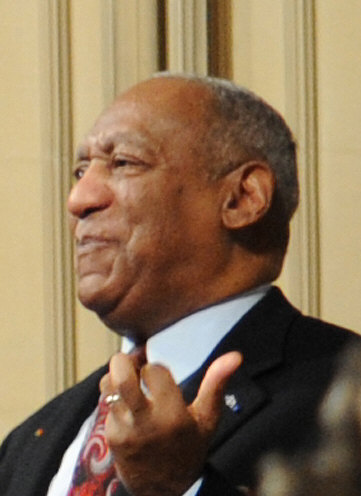The ABC television show “NY Med” did not have permission to film the last moments of Mark Chanko’s life, but they justified it by blurring his face.
This story was co-published with the New York Times.
Anita Chanko could not sleep. At 4 a.m., on an August night in 2012, she settled onto the couch in her Yorkville living room with her dog, Daisy, and her parrot, Elliott, and flipped on the DVR. On came the prior night’s episode of ” NY Med,” the popular real-life medical series set at NewYork-Presbyterian Hospital, starring Dr. Mehmet Oz. Mrs. Chanko, 75, was a fan of the show and others like it.
“It starts off, there’s a woman with stomach cancer and her family, and then there’s somebody with a problem with their baby, I think it was a heart,” she remembered. “And then I see the doctor that treated my husband.”
Mark Chanko, her husband, had died 16 months earlier, in April 2011, after being struck by a sanitation truck while crossing a street near his home. The doctors and nurses at NewYork-Presbyterian Hospital/Weill Cornell Medical Center tried in vain to save his life.
On the TV screen, she saw the chief surgery resident Sebastian Schubl, responding to an emergency in which a man is hit by a vehicle.
“And then I see, even with the blurred picture, you could tell it was him,” she said. “You could hear his speech pattern. I hear my husband say, ‘Does my wife know I’m here?’.”
There was no doubt in her mind: The blurred-out man moaning in pain was her husband of almost 46 years, the Korean War veteran she met in a support group for parents without partners.
“I hear them saying his blood pressure is falling. I hear them getting out the paddles and then I hear them saying, ‘OK, are you ready to pronounce him?’.”
She clenched her fists so tightly that “the palms of my hands almost looked like stigmata” and her mouth got so dry that her tongue stuck to the roof “as if I had just eaten a whole jar of peanut butter.”
“I saw my husband die before my eyes.”
No one in the Chanko family had given “NY Med” permission to film Mr. Chanko’s treatment at the hospital or to broadcast the moments leading up to his death.
Such moments — indeed, all of the intimate details of a person’s health — are supposed to be shared only with a patient and whoever they designate, under a federal law known as Hipaa.
In the 18 years since the law was passed, doctors and hospitals have put in place an ever-expanding list of rules meant to protect patient privacy. Hospitals warn staff members not to discuss patients’ conditions on elevators. Drug stores ask customers to stand back so they don’t overhear information about others’ prescriptions.
Yet, even in the face of this growing sensitivity, reality shows like “NY Med” have proliferated, piggybacking off popular fictional counterparts like “ER,” “Grey’s Anatomy” and “House.”
Medical ethicists and groups like the American Medical Association worry that these shows exploit patients’ pain for public consumption, but their makers argue that they educate viewers and inspire people to choose careers in medicine.
“We have heard many stories of people who were inspired to go to medical school, to become nurses or paramedics, or to head into particular specialties like trauma or transplant surgery after watching our show,” Terence Wrong, executive producer of “NY Med,” said in an email. (He declined to discuss Mr. Chanko’s case or to be interviewed for this article.)
Hospitals like NewYork-Presbyterian, meanwhile, have seized upon such shows as a way to showcase themselves, vying to allow TV crews to film their staff and patients — even emergency-room patients sometimes in no condition to give permission.
When the first season of “NY Med” was broadcast on ABC in 2012, the hospital’s vice president of public affairs at the time, Myrna Manners, told PR Week, “You can’t buy this kind of publicity, an eight-part series on a major broadcast network.” (A second season, also based at the hospital, ran over the summer and garnered more viewers than the first. ABC has not announced whether another season is planned.)
For the Chankos, the episode of “NY Med” added a coda of anger to more than a year of grief. Their daughter, Pamela Chanko, said seeing the specifics of her father’s injuries and death on TV sent her spiraling back into clinical depression. “It just sent me straight back to square one,” she said.
A cameraman records a procedure in an operating room for the reality show “NY Med.” (Donna Svennevik/ABC)
Kenneth Chanko, Mr. Chanko’s son, filed complaints with the hospital, the New York State Department of Health, ABC, a hospital accrediting group, and the U.S. Department of Health and Human Services’ civil rights office.
The show had caused him “great emotional distress and psychological harm,” he wrote in a complaint to the hospital. “I had to unnecessarily relive my father’s death at your hospital a second time, while knowing that the public at large was able to — and continues to be able to — watch my father’s passing, for the purposes of what can only be described as drive-by voyeuristic ‘entertainment.’”
ABC quickly removed the segment involving Mr. Chanko from its website, DVDs and future viewings (although not from the promotional blurb for the episode, which still says “Sebastian Schubl, a Dr. McDreamy-like young trauma surgeon, tries to save the day when a critically injured pedestrian struck by a vehicle is brought to the ER.”) In 2013, the state cited the hospital for violating Mr. Chanko’s rights.
That was not enough for the Chankos, who sued ABC, NewYork-Presbyterian and Dr. Schubl for damages. An appellate panel recently dismissed the case, but the family has asked for that decision to be reviewed. Dr. Schubl and the hospital declined to comment for this article, citing the continuing litigation. ABC referred a reporter to Mr. Wrong’s statement.
In court filings, the hospital and ABC do not dispute that they did not have consent from Mr. Chanko or his family, but they say the patient is not identifiable to the public. The network has asserted that because “NY Med” is produced by its news division, it is protected by the First Amendment. Lawyers for NewYork-Presbyterian have argued that the state does not recognize a common law right to privacy and that any privacy right Mr. Chanko did have ended upon his death. They say that the Chankos themselves are responsible for their loss of privacy.
“There would today still be no identification of the patient or his family but for the latter’s publication via this lawsuit,” a brief for the hospital says.
The day Mr. Chanko was hit by a private garbage truck had been entirely forgettable, his wife said. “If I had a diary, I’d leave the page blank.”
They arrived home past 11 p.m. after spending a few days at their second home in Goshen, Conn., in Litchfield County. As they unloaded their luggage, Mr. Chanko looked in the refrigerator and noticed they were out of milk and bananas. He decided to run across York Avenue, in the Yorkville section of Manhattan, to a deli.
After Mr. Chanko had been gone a few minutes, the building doorman buzzed up and asked Mrs. Chanko to come downstairs. Not understanding the urgency, she said she would be down in a bit.
The doorman buzzed again. Moments later, the doorbell rang. When she answered, a longtime neighbor grabbed her arm. “Anita, you have to come with me,” she recalled the neighbor as saying. “Mark needs you. He’s been hurt.”
When she got downstairs and walked outside, Mrs. Chanko saw an ambulance and her 83-year-old husband on a gurney, his head bandaged. The neighbor drove her to NewYork-Presbyterian. There, she watched as the medical team hurriedly pushed the gurney carrying her husband near the emergency room.
Dr. Sebastian Schubl, in a video still taken from the episode where he treats Mark Chanko.
“I rushed up because I wanted to run alongside him and just hold his hand and reassure him and say, ‘You’ll be OK,’” she said. The doctor said no. “That would have been my last chance to even say something to him.”
Mr. Chanko was initially alert and awake, and able to respond to questions, medical records show. But he was in bad shape: His pelvis had been broken in several places, as had his left femur. The skin was ripped off his right leg.
Outside the operating room, doctors and nurses could not detect Mr. Chanko’s pulse and resuscitated him. In the operating room, he became more unstable, medical records show. Twice more they tried to bring him back. He was pronounced dead at 1:17 a.m.
Dr. Schubl and a social worker walked into the conference room, where the family was waiting, and shut the door.
“I did everything I possibly could,” Dr. Schubl told them. “Unfortunately, he did not survive. I am sorry.”
The family did not know until the episode was broadcast that a camera was focusing on the closed door of the room where they had gathered and that audio of Dr. Schubl was being recorded.
Afterward, on the episode, Dr. Schubl turned to the camera and said, “Rough day. Rough day.”
“It was the last clip before the commercial,” Mrs. Chanko said, “or as I put it, ‘Watch this man die, now we’re going to sell you some detergent.’”
According to PR Week, the public affairs staff at NewYork-Presbyterian contacted Mr. Wrong in 2008, eager to bring one of his shows to the hospital. Mr. Wrong had completed two shows based at Johns Hopkins Hospital in Baltimore and was working on another in Boston.
After three years of trying, production began in 2011 at two campuses of NewYork-Presbyterian: Weill Cornell on the Upper East Side and Columbia University Medical Center in Washington Heights, both in Manhattan (some filming also took place at Lutheran Medical Center in Brooklyn).
But two months into filming the first season, Mr. Wrong later told the Philadelphia Daily News, “Weill Cornell was just not delivering enough traumas.” To capture more drama and action for “NY Med,” he said he signed contracts with other emergency rooms and began keeping videographers in NewYork-Presbyterian’s emergency room at Weill Cornell 24 hours a day.
Mr. Wrong ended up with thousands of hours of footage, and the luxury of cutting any example that was not perfect, he told Capital New York last year. “You can be shut out of a critical moment that the case lacks emotional resonance without,” he said. “I will give you one of those: the ‘goodbye’ moment, it is the moment where a family says goodbye to their loved one going into surgery. If you don’t capture that moment, because a nurse shut the door on your camera’s face, you kill that piece. ”
Mark S. Chanko, in a family photo. (Chanko family)
Some of the patients and families captured by Mr. Wrong’s cameras have no complaints. “I think they were honest in their portrayal of our family and the love that we had and the concerns that any average family would go through when faced with this type of surgery,” said Dara van Dijk, whose mother’s heart valve operation was featured on the same episode as Mr. Chanko’s death. Ms. van Dijk did have one quibble: She was shown falling off a chair while meeting Dr. Oz in the episode. “In a million years, I didn’t think that they would show that,” she said.
Typically, hospitals have not received money in return for allowing medical reality shows to set up shop, and NewYork-Presbyterian is no exception, an ABC spokeswoman said in an email.
“That was very important to us,” said Peggy Slasman, a spokeswoman for Massachusetts General Hospital, which was featured on Mr. Wrong’s Boston Med. “This was not entertainment. This was news. We would not have participated if they had said, ‘For $20,000 or for $50,000, we will include you in a series.’ We’re not the marketing department. We processed it in a similar way as we would any request that we would get from the media.”
The real payoff for participating hospitals is distinguishing themselves at a time when other forms of promotion are no longer as effective, said Jennifer Coleman, the senior vice president of marketing and public relations for Baylor Scott & White Health, a large hospital system in Texas. Baylor self-produced a reality series about its cancer center and paid to broadcast it on local television.
“Advertising is just so saturated right now,” she said. “You put your thumb over anybody’s ad and it’s just the same. That’s what people are trying to break through.” By participating in a major network program, she added, “They get that endorsement.”
Patients caught up in emergencies are especially vulnerable, posing special issues for reality shows. They may not be conscious or able to speak for themselves; they may be quite literally exposed, as caregivers work to help them. Joel Geiderman, co-chair of the emergency medicine department at Cedars-Sinai Medical Center in Los Angeles and chairman of the ethics committee of the American College of Emergency Physicians, compared it to taping in a store dressing room and only asking for permission later. Patients’ loved ones, too, are caught up in the moment, making decisions on the fly.
The emergency physicians group opposes “the filming for public viewing of emergency department patients or staff members except when they can give full informed consent prior to their participation,” yet show after show returns to the emergency room, drawn by the life-or-death stakes.
The Chankos sued ABC, NewYork-Presbyterian and Dr. Schubl for damages. Anita and Kenneth Chanko are above. (Adam Lerner/AP for ProPublica)
The New York Times Co. was sued for invasion of privacy in the early 2000s, by a group of patients in New Jersey who appeared in “Trauma: Life in the ER,” a series produced for Discovery’s Learning Channel. One appeals court ruled that the show qualified as news and deserved the same protections under the law. Many of the plaintiffs settled their cases individually, a lawyer for them said.
Mr. Wrong of “NY Med,” said by email that he had not been sued over his medical shows before: “We put enormous behind the scenes effort into training our team and working in the medical environment. We have profound respect for the work we witness and the dispensation that allows us to do so.”
Some hospital systems—including the New York City Health & Hospitals Corp., which runs the city’s 11 public hospitals—were approached about participating in “NY Med” but declined. “It was just going to be very difficult to provide all the access that they wanted,” said a hospital corporation spokeswoman, Ana Marengo. “It sounded interesting but it was just too much for us to accommodate really.”
The Mayo Clinic, based in Rochester, Minn., regularly works with news crews to highlight medical care and patient stories. But it has insisted on asking patients for permission before they meet the film crews and has turned down requests to film first and seek permission later.
“Clearly I can’t comment on whatever happened in some other hospital,” said Ginger Plumbo, a Mayo spokeswoman. “I can tell you here, we would not be comfortable with a situation where you’re filming patients’ situations and then trying to get permission after the fact.”
Mr. Chanko’s family had already settled a lawsuit against the private sanitation company whose truck backed over him by the time his widow saw the episode of “NY Med” featuring his case.
A couple of hours after watching her husband die on TV, Mrs. Chanko called her daughter-in-law Barbara, a health care ethicist at the U.S. Department of Veterans Affairs in Manhattan. Barbara Chanko remembers standing up in her office and saying, “If this happened, it’s got to be stopped.” When she watched the episode, she was shocked. “We protect patient privacy in everything we do,” she said. “I feel very betrayed by that medical staff for what they did.”
The Chankos’ son Eric Chanko, a physician who works at a hospital in Ithaca, N.Y., said he, too, struggled to reconcile what he saw on the air with his own work. “They basically did everything that you’re taught in medical school not to do,” he said.
In the aftermath of the broadcast, a lawyer for NewYork-Presbyterian tried to assure the family that no one could identify them from what was shown on TV. “Please be assured that your father’s and your family members’ images, likeness and other potentially identifying information were completely obscured in the episode,” the hospital’s associate general counsel, Caroline S. Fox, wrote in an emailed response to Kenneth Chanko’s complaint.
From left, Eric, Anita, Barbara and Kenneth Chanko, four of the five plaintiffs in the case. (Dina Litovsky for The New York Times)
Yet a few weeks later, Mrs. Chanko said she received a call from a woman who used to work as a pet sitter for her and her husband. “She said to me, ‘Do you watch “NY Med?”.’ She said, ‘That was Mark, wasn’t it?’ She recognized him.”
Officials with the state’s health department concluded that NewYork-Presbyterian had violated Mr. Chanko’s rights and, indeed, its own privacy policy. “The patient was unaware and uninformed that he was being filmed and viewed by a camera crew while receiving medical treatment thus his privacy in receiving medical treatment was not ensured,” inspectors wrote in a citation released under New York’s Freedom of Information Law.
New York regulators did not impose any sanctions on the hospital.
Federal health officials are still reviewing whether NewYork-Presbyterian was obliged to get permission from Mr. Chanko or his family before allowing a TV crew to film him.
Hipaa, more formally the Health Insurance Portability and Accountability Act, does not give patients a right to sue if doctors and hospitals violate their privacy. Neither does New York State’s Patients’ Bill of Rights, courts have ruled.
A state Supreme Court judge in Manhattan narrowed the Chankos’ lawsuit, but allowed some claims to proceed. In court filings, lawyers for the hospital and Dr. Schubl made the argument that the law prohibits medical professionals from sharing information about a patient only after he has been examined or treated. Because the “NY Med” film crew had shot video during Mr. Chanko’s treatment, they claimed, it was legal.
In November, an appellate panel issued a unanimous order dismissing the case. The conduct “was not so extreme and outrageous” to justify a claim of intentional infliction of emotional distress, the judges wrote. The doctor and hospital, the judges added, did not breach their duty to avoid disclosing personal information “since no such information” was disclosed.
Privacy experts say the legal arguments made by ABC and the hospital have troubling implications for patients seeking medical care.
“Taken to its logical conclusion, what they’re saying is you can invite anyone in, and unless the patient objects at that very moment, there’s no violation of the patient’s privacy,” said Joy Pritts, an expert in state health privacy laws who until recently was the chief privacy officer at the Office of the National Coordinator for Health Information Technology. “That’s crazy.”
The family is working on an appeal. “If this ever got in front of a jury, I can’t imagine a jury not thinking a wrong was done to my father and to us,” Kenneth Chanko said. “Morally and ethically it’s not right, and I would also think that legally it can’t possibly be right.”
Asked what she would do if the case fails, Mrs. Chanko said the family would not stop pushing for redress. “If there’s no applicable law, there most certainly should be,” she said. “I’m willing to just pursue it all the way. Why shouldn’t there be a law against this kind of thing?”
Theodoric Meyer contributed to this story.
Correction: An earlier version of this story incorrectly referred to the newspaper that published a quote from “NY Med” executive producer Terence Wrong. It was the Philadelphia Daily News, not the Philadelphia Inquirer. Both newspapers share a website, where the story appears.

![]()










 T
T

